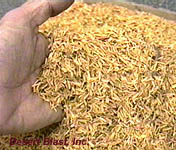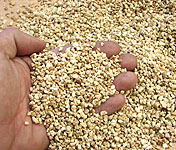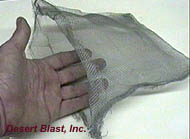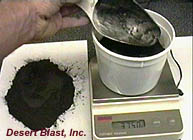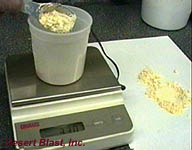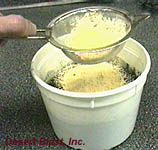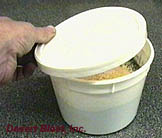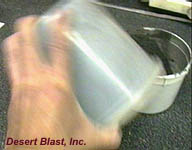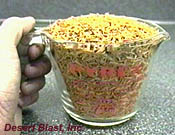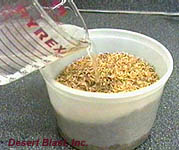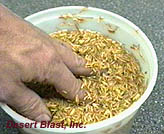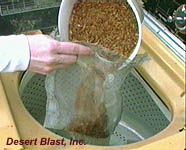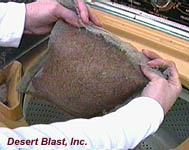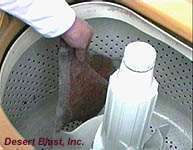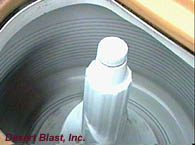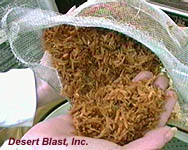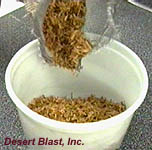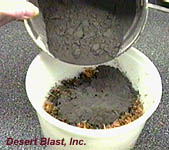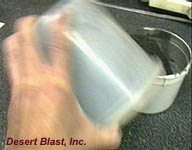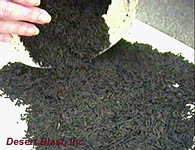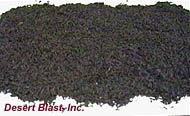BP COATED CORN COB & RICE HULLS
Meal Coated Corn Cob (or Rice Hulls) is the explosive that is used to break open aerial shells and simultaneously ignite the stars inside without shattering them into dust. "meal powder" is nothing more than very finely powdered black powder (gun powder). Rice hulls are simply the shells of ordinary white rice. They look very much like grass seed, and if you really wanted to, you could use grass seed in place of rice hulls, but it's a very expensive alternative and there are much better (and less expensive) substitutes. There is nothing special about rice hulls, and in fact, you can use several other materials that are less expensive and work better, such as corn cob. The idea here is to have an explosive that is easily ignited, strong enough to break the shell and throw the stars a great distance, but not be so powerful that the explosion shatters the stars and renders them useless. If a small granular type material is coated with black powder, it burns much faster than just the black powder would alone. Coating the corn cob (or whatever you're going to use) not only increases the burning speed of the black powder, but the mixture is also far more bulky than black powder is alone. Because it takes up more space, it fills the empty gaps in the shell and holds the stars against the wall of the shell. Rice hulls have historically been chosen because they are considered to be a waste material and are essentially free. We're told that in some states, the local authorities pour rice hulls on the road for added traction in the winter. Although they may be very easy to get in some places, they are nearly impossible to get a hold of in others. A nice substitute that we've found works even better is corn cob. Corn cob is just what the name implies. It is dried and granulated corn cobs. In short, whichever material you choose, the procedure outlined below will work well for either.
| Note the difference in appearance between Rice Hulls (top) and Corn Cob (bottom). Either one can be used in this process, although corn cob does work a bit better in aerial shells. |
STEP ONE: MAKING THE DRYING BAG
| The first thing you'll need to make is a drying bag, which is just a large "pocket" with a fold-over flap. We make one out of some old window screen, fold the edges over and staple with an ordinary staple gun. Make sure it is large enough to hold about a cup full of corn cob or rice hulls. Set this aside for now; we'll be using it later. |
STEP TWO: PREPARING THE BP MIX
| Weigh out 375 grams of black powder and place it in a large container. Make sure that this container has a lid that snaps on and will not leak. |
| Weigh out 75 grams of dextrin and place it on a piece of paper. |
| Take the dextrin that you've just weighed and run it through a strainer into the measured amount of black powder. This breaks up any clumps of dextrin so that it will evenly mix with the black powder when you shake it. |
| Snap on the lid to the container and shake the dextrin and black powder mixture until it's evenly mixed. Set this mixture aside. |
STEP THREE: WETTING
| Measure out about a full cup of corn cob (or rice hulls), place them in a large plastic container, and add about 2 cups of warm water. |
| Tamp down the corn cob (or rice hulls) with your hands until they are all under water and wet. Let the corn cob or rice hulls soak for 20 minutes, occasionally stirring them and tamping down any that may become dry on top. |
STEP FOUR: DRYING
| What we're going to do now may seem a bit strange, but it works great. The hulls need to be just damp at this point; not wet and not too dry. You can either spread them out and allow them to dry to dampness (which takes several hours), or do it in 20 seconds flat using your washing machine. We use the washing machine as a large centrifuge by utilizing the "spin" cycle. Beware that your wife may kill you if she sees you doing this, so choose an appropriate time to dry your material. After they have soaked for 20 minutes, open your drying bag over the washing machine, and pour in the soaking wet cob/hulls and water. The water will pour right through the screen bag and drain into the washer. |
| Fold over the top of the drying bag as shown to prevent any of the material from escaping during the spin. |
| Washers have a safety mechanism that disables the unit if the lid is opened. Although you don't need to bypass this feature, you can if you want to watch what's going on. To do this, look for the small tab or slot that the lid pushes in to tell the washer that it's closed. Generally, all you have to do is to stick a screwdriver in the slot and the washer will operate as if the lid was closed. This really doesn't need to be done, but we've done it to show the washer operating. |
| Before you actually spin the cob/hulls, make sure that you can select a "spin only" position on the washer control. You might have to play with the control a bit to find the exact place that will make the unit spin, but not to spray in water and rinse. Once you are confident that you can make it spin without spraying water, go ahead and set the wet bag of cob/hulls in there and turn on the spin cycle. Allow the bag to spin for only 20 seconds. Any longer will make the material too dry to use. Remove the bag and have a look inside. They should be dark and damp, but not wet. Pour the damp cob/hulls into a large plastic container that you've got a lid for. Make sure that the lid fits well and doesn't leak. The container should be large enough to hold both the cob/hulls and the black powder with plenty of room to spare. |
STEP FIVE: COATING
| Combine the black powder/dextrin mixture that you made earlier with the damp cob/hulls. Snap on the lid, and shake well. |
| Lay out several sheets of newspaper (2 layers thick) and empty the coated material onto them. Break up any lumps that may have formed and spread the coated chunks out as thinly as possible. The coated material will become dry to the touch when left overnight, but will not be completely dry for a couple of days. |
| Be warned that you now have an explosive spread out on the floor. It is very flammable and it is vital that there are no sources of ignition anywhere in the area while the cob/hulls are drying. Do not attempt to speed the drying up by heating the cob/hulls in any way. When dry, you can test the material by igniting a small pile of it (obviously far, far away from your large quantity of coated drying material). You'll notice that they burn very, very fast. Much faster than black powder does alone. This is because the fire can propagate faster around the outside of the cob/hulls and flash through the airspaces in between each piece. The coated Corn Cob (or Rice Hulls) can be stored until you're ready to use them in an aerial shell. |

